Challenges Designers Face When Using AI-Generated Images
Limitations to genuine creativity and originality with AI mainly include heavy reliance on data, which sometimes yields repetitive or similar-looking designs. Other concerns arise regarding the quality of the data used to train these systems: poor-quality data affects output.
There are still very critical debates about privacy issues, not to mention ethical ones regarding job displacement and embedding biases in designs. Sometimes, AI misses the fine, human aesthetic touch and the specified customizations that many projects require at various instances.
The Growing Popularity of AI-Generated Images
More than 15 billion AI generated images have been produced since 2022, which illuminates the tremendous rise in the utilization of AI-driven tools throughout the creative processes. Approximately 34 million new images made by AI are downloaded each day, which is quite telling of how AI is playing a bigger part in this particular area.
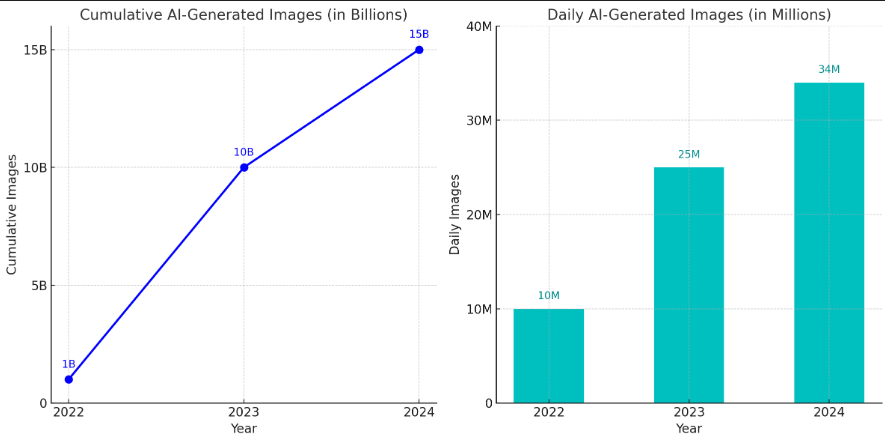
Here's the growth in AI-generated images in two simple charts:
- Line graph: Total number of AI images over time. The total number of AI images has shot to almost 15 billion from near zero sales by 2024. Quite a leap from the previous years, which clearly shows how popular the tool of AI images has gotten.
- New AI Images Created Each Day: The bar chart gives us a glimpse of how many images are being made by AI each day. By 2024, it is anticipated that roughly 34 million new images will pop up every day! Such rapid growth indeed serves to give an idea of how big a role AI has started to play in the creative arena.
These charts make pretty clear that AI generated images aren't some kind of fad, but they are actually a big deal in everyday design and creativity.
Why Are Designers Turning to AI-Generated Images?
AI imaging devices bring more capabilities and variability to creativity through graphic design. These kinds of tools have the ability to be used for layout work as well as to create posters, illustrations, etc. Quality-wise, they are applicable to an extremely wide range of formats such as site banners, flyers, and printed pieces.
1. Loss of Creative Control
We overdepend on AI, our creativity will not be able to improve. Unlike AI, which directly generates the solutions, at times we are lazy to think outside the box and not put our thoughts into practice or experimentation.
Rather than exploiting options or developing original ideas, we might be referring to AI’s ideas which would turn our creativity into a formula and would thereupon constrict our "out of the box" thinking.
Examples of Lost Creative Control:
- Style Has No Harmony: If AI generates images, they may contain an unsuitable style, color scheme, or brand aesthetic than what the designer requires.
- Correlation Issues: AI with even wisely designed keywords may emit such diversified content that standardization along different images might become difficult.
- Poorly Developed Customization Options: For designers who wish to move around image elements independently, AI may not provide sufficient freedom.
Tips for Maintaining Control with AI
- More Detailed Prompts: As much as possible, prompt the AI with specifics to let it drive the process into the specific outcomes you want.
- Restricted Use of AI: Hands-On Ideation: Consider using AI images as a point to start with and hence further explore the depth of the creative side by manually intervening.
- Integrating AI with Traditional Tools: Select AI to create an initial draft based on the rough foresee technology we thus practice software-based design to the spec of your design.
2. Quality and Authenticity Concerns
Artificial intelligence-powered images, once in a while, seem to lack the truth and the luster that is usually seen in homogeneous design approaches. Designers sometimes realize that AI-based visuals are perfectly satisfactory but may be so "generic" or over-polished that they have the quality of graphic designs that make them professionals.
Why Quality Issues Arise with AI-Generated Images
Even though AI images are visually attractive, they might lack the dimension of emotional depth and make the picture look artificial. Human propulsive pictures often have these qualities. Lawyers, in cases in which psychological insights or demonstrations of one's human condition are of importance, might trip up here.
Common Quality Issues with AI-Generated Images:
- Super Perfect Composition: AI creations may sometimes be so ideally balanced or too similar that they might not match the design’s purpose, which is not always the case.
- Visual Artifacts and Distortions: AI image generators in some cases display images with artifacts, weird deformations, or side effects, most notably when the prompt is complex. Nevertheless, thanks to the AI, we have a perfect design through contrast or repetition of shapes.
- Inadequate Emotional Attachment: Machines are incapable of true human empathy, thus, the generated images might not contain the subtle emotional differences that are typical of normal paintings.
Ensuring High Quality and Authenticity
In order to keep the high-quality standards, the designers should do the following:
- Run AI Images Through Multiple Checks: Through the use of design programs, you can clean up or change the images that are generated by AI to boost the visual quality.
- Avoid Relying Solely on AI for Final Versions: If your project requires authenticity then putting AI in a part-time job as a tool is a preferable option to a major source idea.
- Use AI for Mockups, Not Finals: In developing the project, we can play with artificial intelligence mocks up but can only redo the final project by hand through re-creating or modification procedures.
The AI software market's global annual revenue stands at around $100 billion

The AI software market's global annual revenue (2018 to 2025):
| Year | Revenue |
| 2018 | $10.1 billion |
| 2019* | $14.69 billion |
| 2020* | $22.59 billion |
| 2021* | $34.87 billion |
| 2022* | $51.27 billion |
| 2023* | $70.94 billion |
| 2024* | $94.41 billion |
| 2025* | $126 billion |
3. Intellectual Property and Copyright Issues
AI artwork is the only type of AI-generated content that doesn't involve the ingenuity of a human. While technically it is owned by the person(s) who have programmed AIs, whose copyrighted content archives do not include creative works of art.
Since copyright is only around creations that are made by humans, in the AI area, designers who enable it are the ones considered accredited.
Consequently, AI art, as a result of its being algorithmically generated, cannot be subject to copyright along the lines of the type set up by copyright law, which only recognizes the creative input of a human author.
The Legal Grey Area of AI-Generated Content
Lack of clearly defined legal rules is mainly about authorship and copyright protection of AI-produced pieces, which appears to be the main issue.
Moreover, AI-generated content is likely to cause the confusion of the protected works caused by the information one of them comes from so actually there is an impossibility of finding out the content that is actually plagiarized.

The Future of Creativity: The Intersection of AI and Copyright
Challenges Related to Copyright and Ownership
Historically, copyright has been a concept centered around works created by humans, where the intention and expression of ideas lead to authorship.
Nevertheless, AI’s capacity to produce original works with a small amount of human input has raised some legal questions about who owns such works.
As AI is a self-sufficient entity, speculation of authorship looms large, which in effect, tests the established copyright norms and the legal institutions seem to be at a loss in how to approach the AI-generated content.
Steps Designers Can Take to Navigate Copyright Issues
- Check Licensing Policies: Do the specific AI tool's licensing documents that involve the usage of AI models, and licenses of the generated images are right.
- Use AI in Limited Scopes: Right now, please just take it to projects without copyright worries or only as references for custom designs.
- Stay Updated on Legal Developments: Be vigilant about the changes to the copyright laws regarding AI-generated content, since this is an area in the process of development.
4. Lack of Personalization and Brand Consistency
While AI-generated content lacks personalization, small businesses can think of the ways to insert a personal element in the content by humans. For that, only reviewing and editing the given content to mix it with brand's language, values, and particular selling points can help insert it.
Why Personalization Is Difficult with AI
AI personalization needs a whole lot of data to work well which is often not available for startups. Even when the data is accessible, it is usually of low quality impeding the building of accurate predictive models and leading to wrong recommendations.
Personalization Challenges with AI Images:
The industry is thriving, with quite a few companies already allocating more than 50% of their budgets to AI personalization. It is true that the investment measures indicate great aspirations, but organizations also have certain vague spots.
Be it data privacy or maintaining the human element in automated conversations, companies have to deal with these issues if they want to exploit AI to the fullest. Furthermore, they can do this through the critical examination of problems and the generation of convincing AI solutions.
Companies, thus, have the chance to use the AI system for the good of their customers as well as their own profits.
The personalization Challenges with AI images are:
- Defining User Segments
- Data Privacy
- Striking a Balance with Customer Sentiment
- Costs and Resources for Implementation
5. Technical Limitations and Learning Curve
Even though AI image generators are built to ease the (creative) process, they have their own technical side issues.
Designers should know what AI tools can do and what they cannot do so that they can get the maximum potential from them, but the learning curve is usually too steep for them.
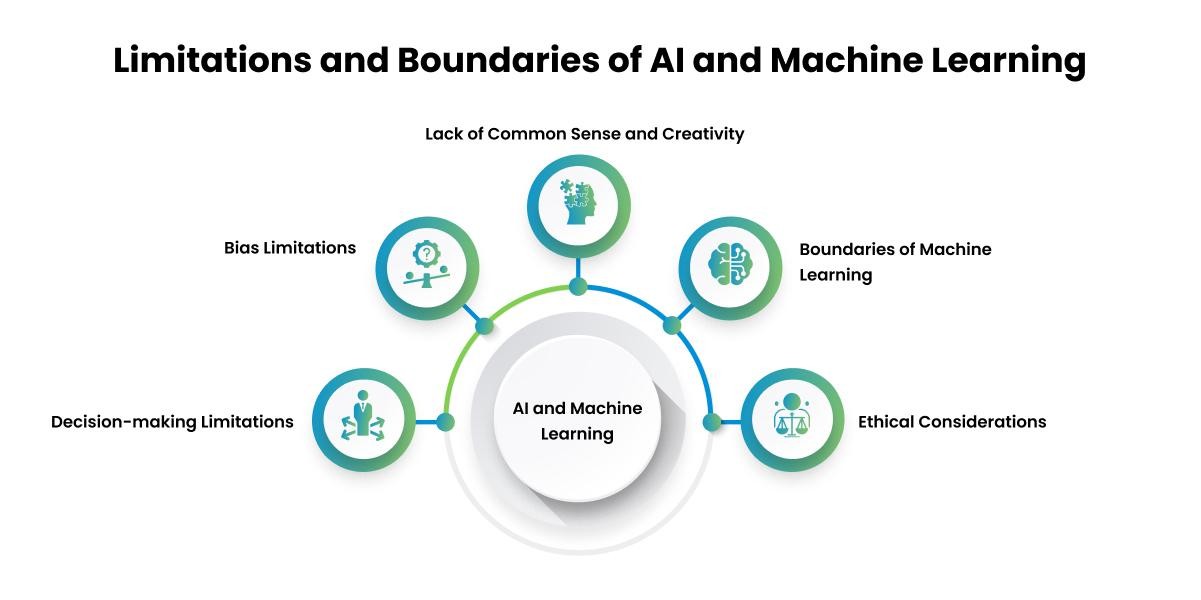
Common Technical Challenges with AI
- Software Limitations: Some AI image generators generate low-resolution images only, which severely affects their usability in hands-on high-level projects.
- Learning New Prompts and Techniques: Quite a few AI tools insist on specific prompt structures, so there can be some degree of learning time designers are willing to take.
- Integration Issues with Other Software: There are some AI tools that have difficulties in working together with the standard design software, making the systems incompatible.
FAQ: Challenges Designers Face When Using AI-Generated Images
What are the challenges AI faces in the field of graphic design?
Riding on AI in graphic design is not an easy way of achieving things. What is more, AI can deliver graphics, but it cannot reproduce the human abilities of creation and personal touch.
Besides, AI can hardly render the emotional depth and cultural nuances that are the main principles of how designs really communicate with people.
How will AI affect designers?
The participation of AI designers will be evident in those who manage to offload to the machine monotonous tasks and thus learn to concentrate more on creativity and innovation.
Yet, the more manual and reassuring jobs can be automated. Therefore, human designers will need to adapt, which can be done by following the line of AI tools, in using them to aid the work, not replacing it.
What are the limitations of AI in graphic design?
When it comes to graphic design, AI has its limits. It can't really come close to human designers' creative intuition and emotional connection.
Besides, conceptual and cultural awareness, two key components that make graphic design unique for each client, are obstacles for AI, even when it seems it is progressing on other tasks.
What's more, you might find AI software to be somewhat rigid, perhaps it's lack of the ability to accommodate to rapidly changing trends that a human designer could be displaying.
Also Read: The Role of AI in Hyper-Realistic Character Design




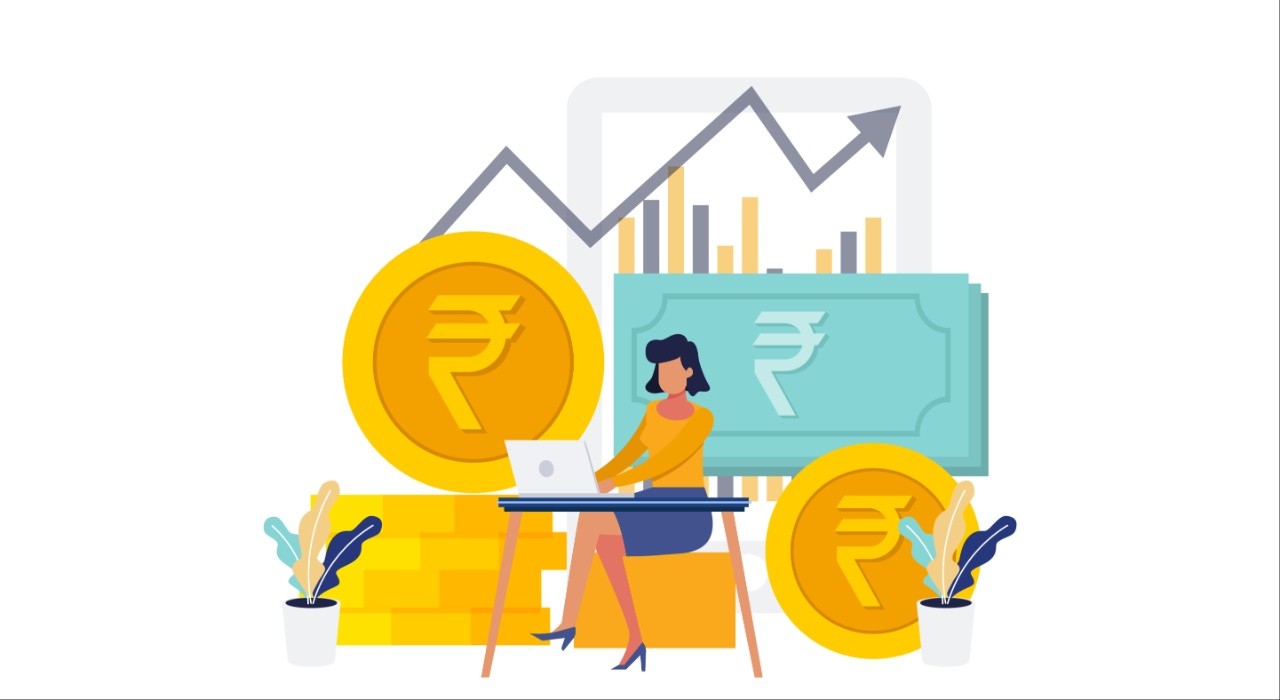
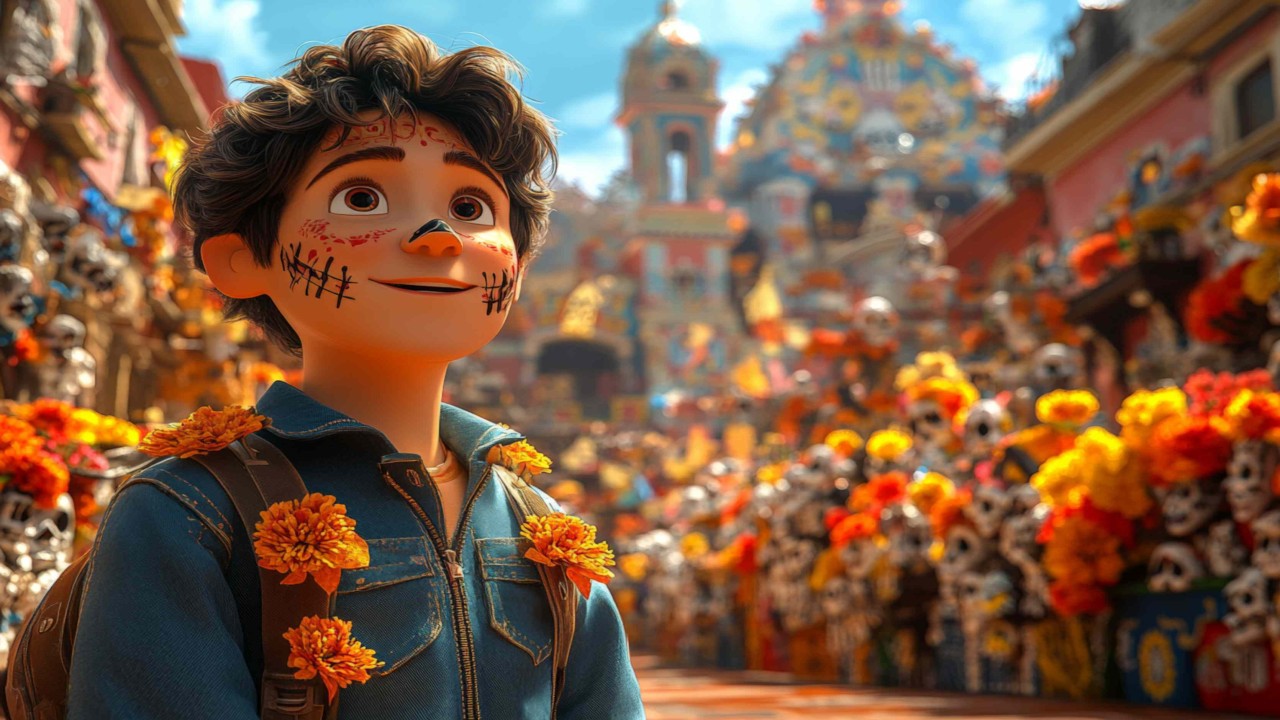

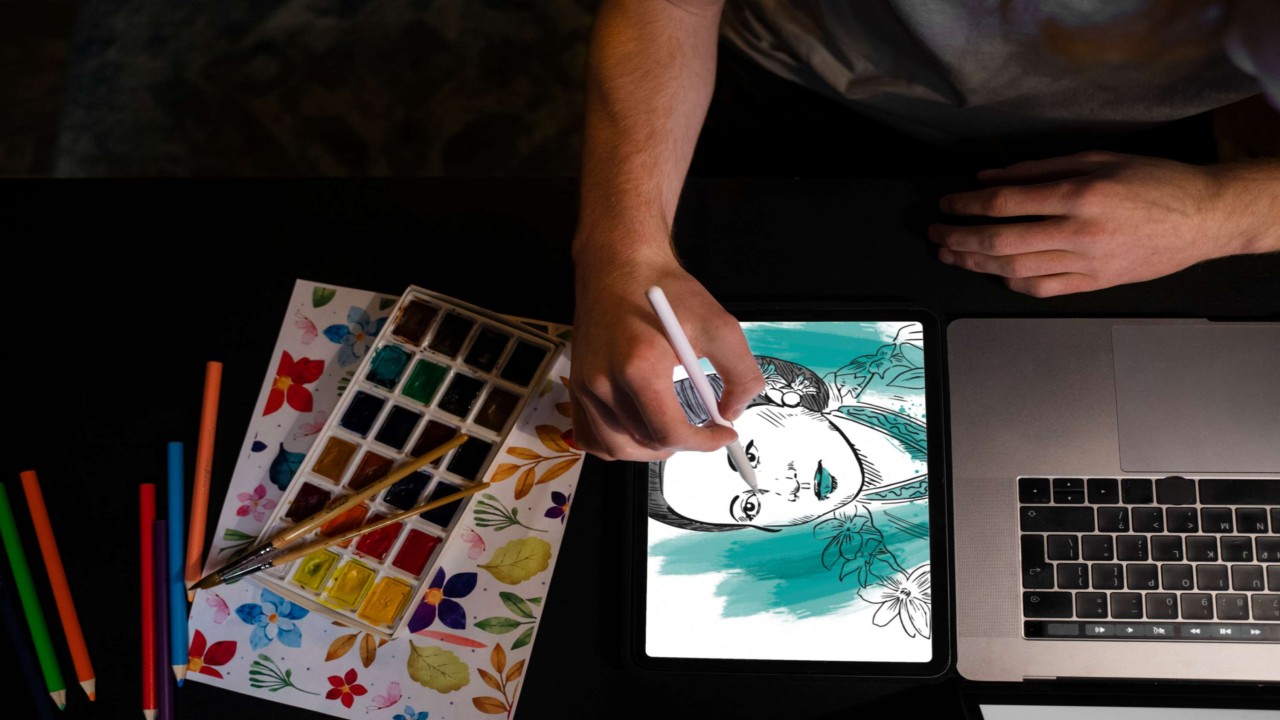
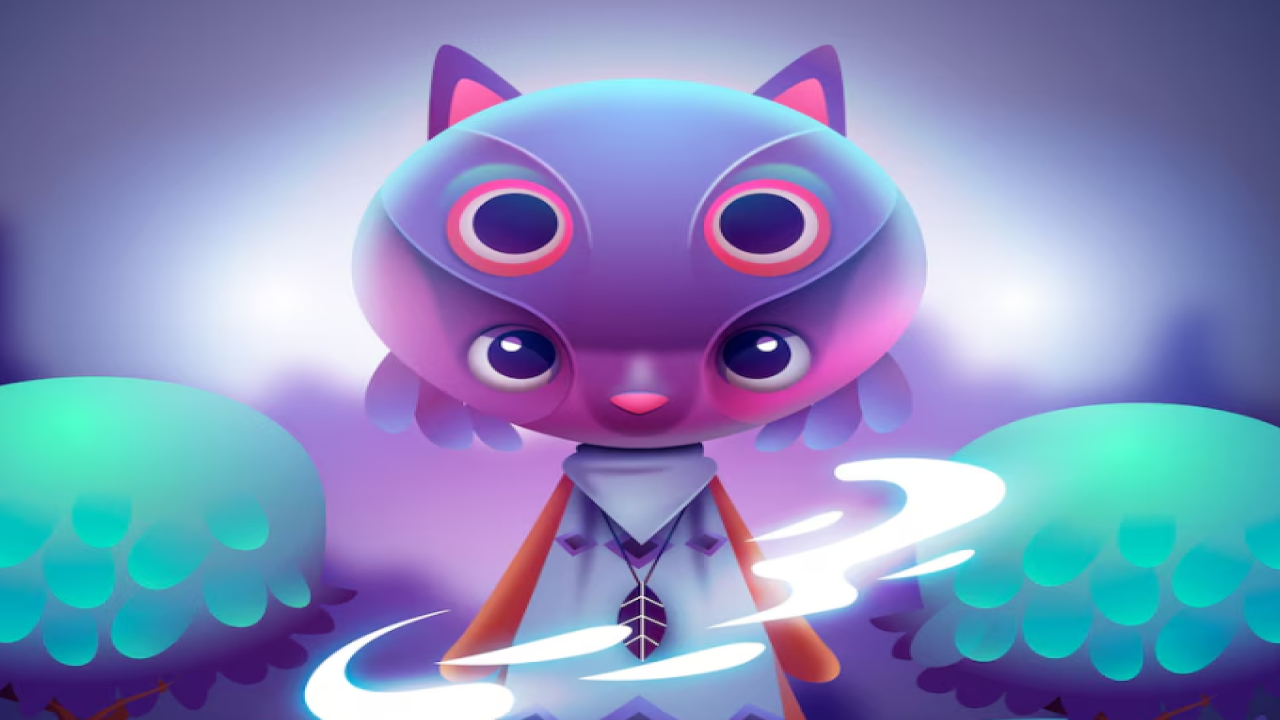
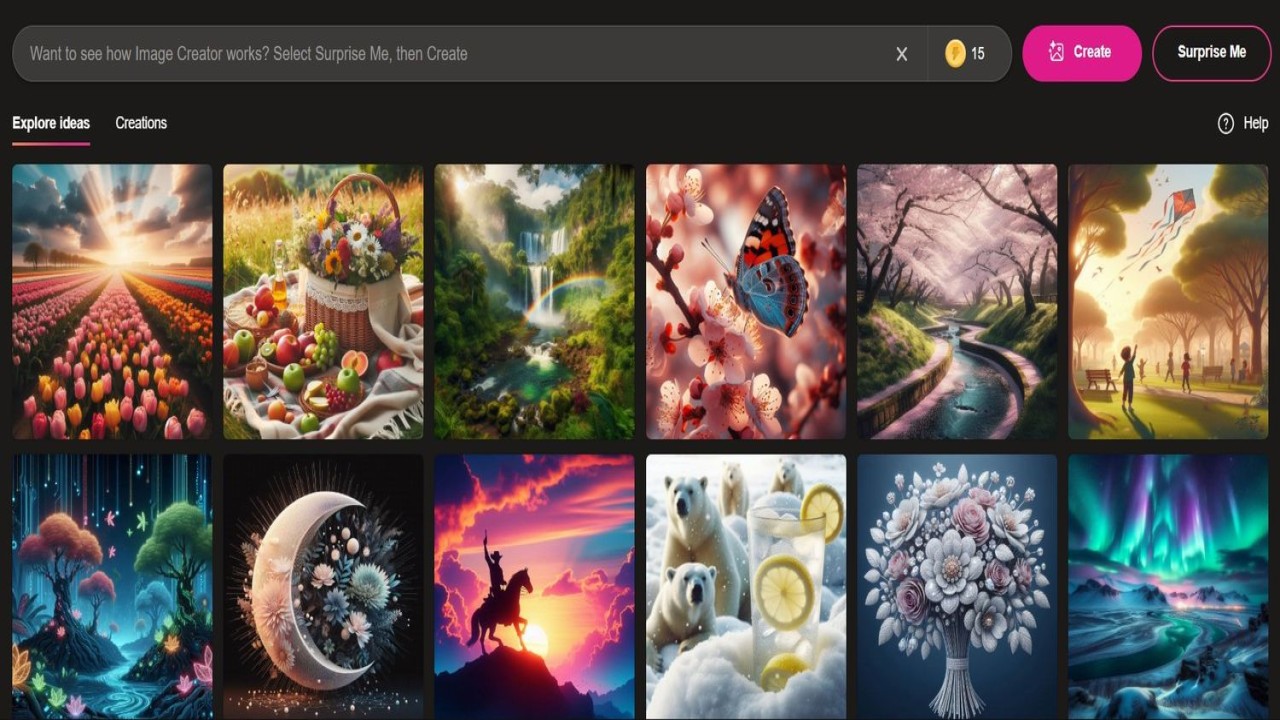
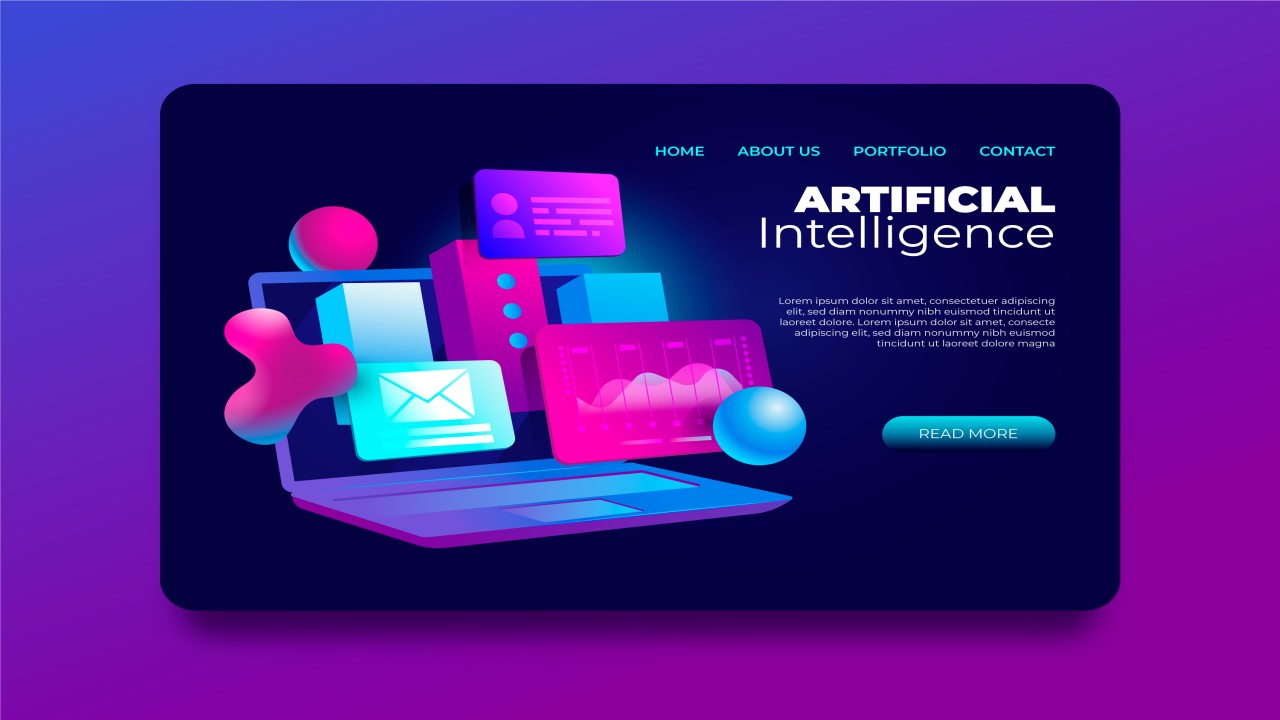
Comments (0)
No comments found